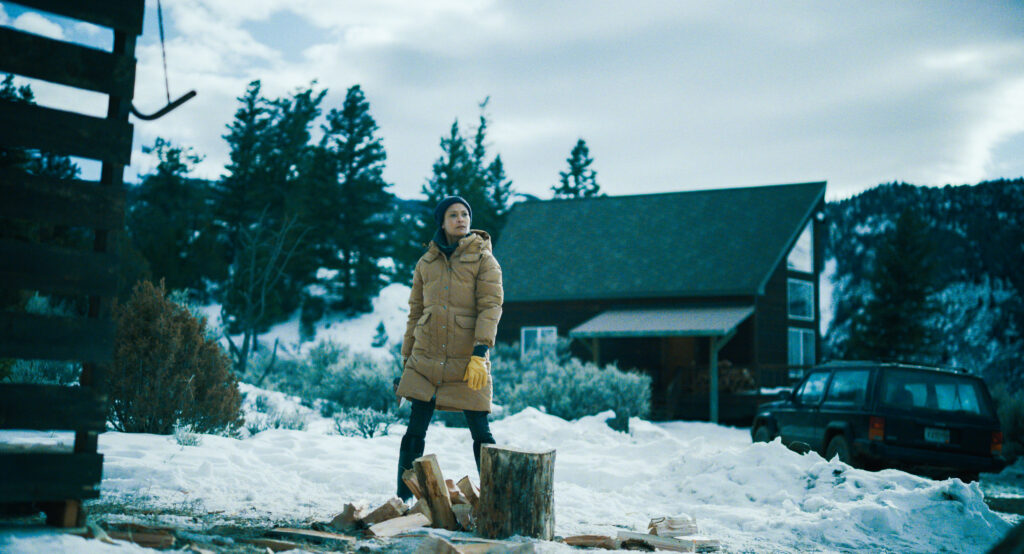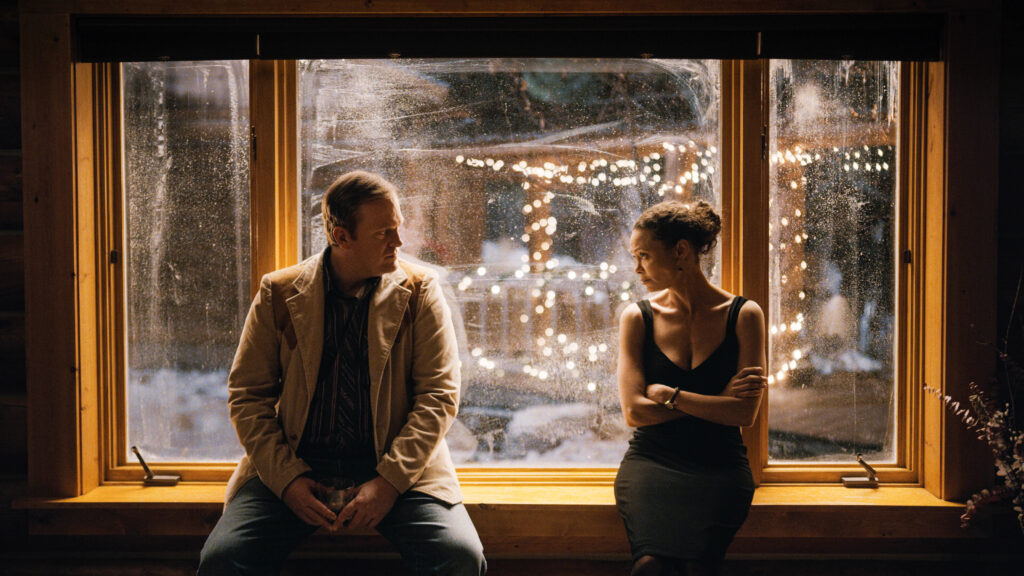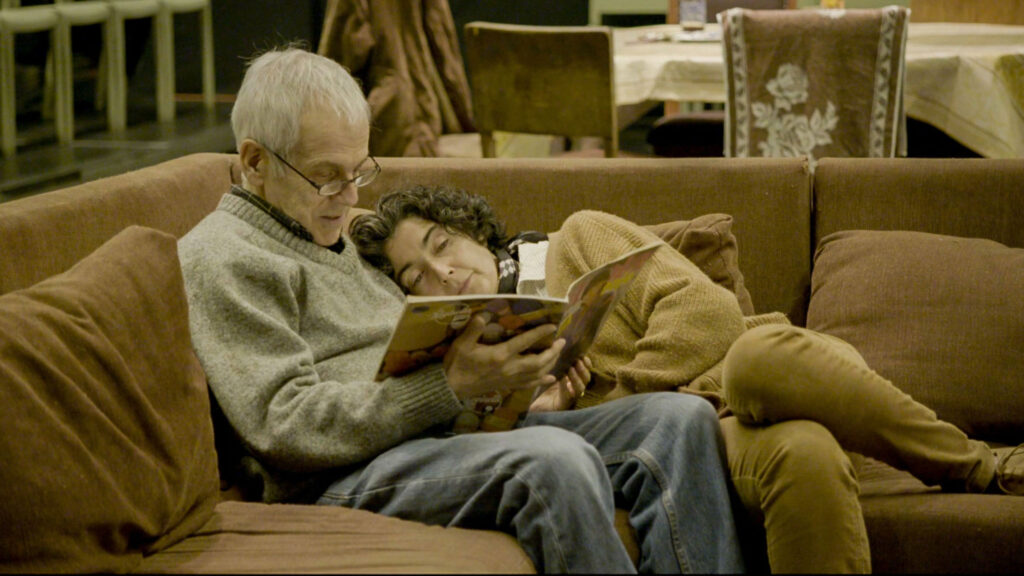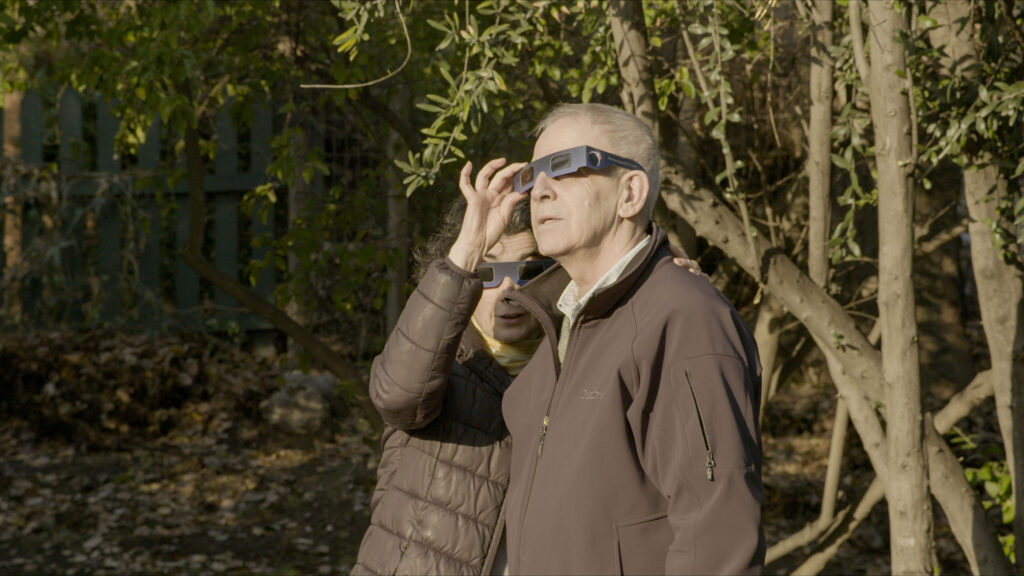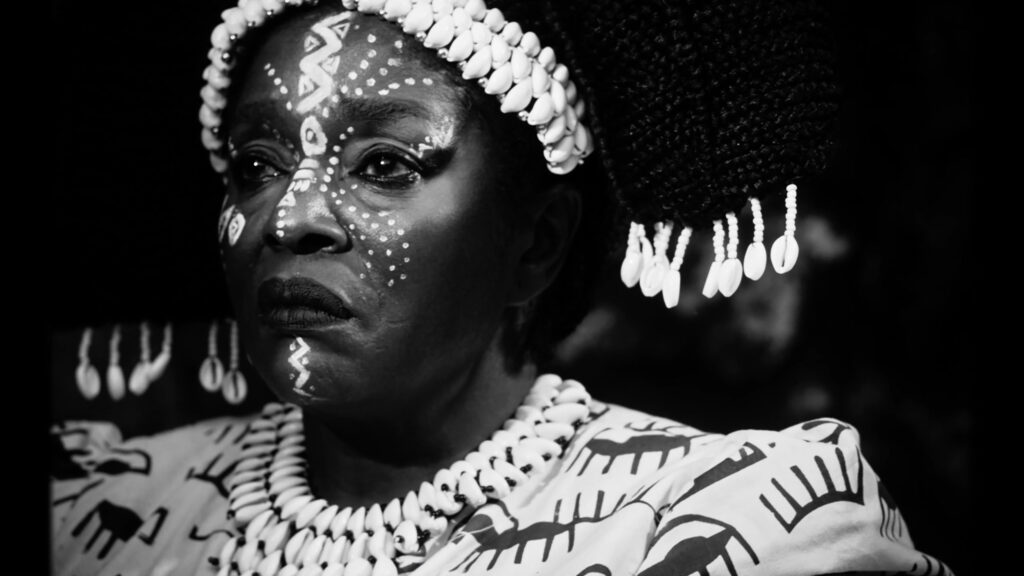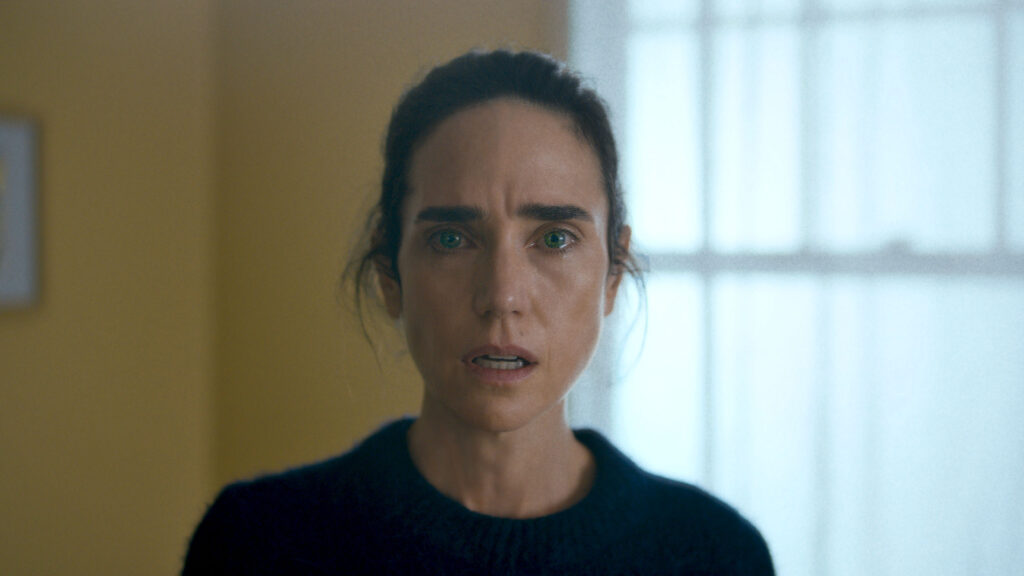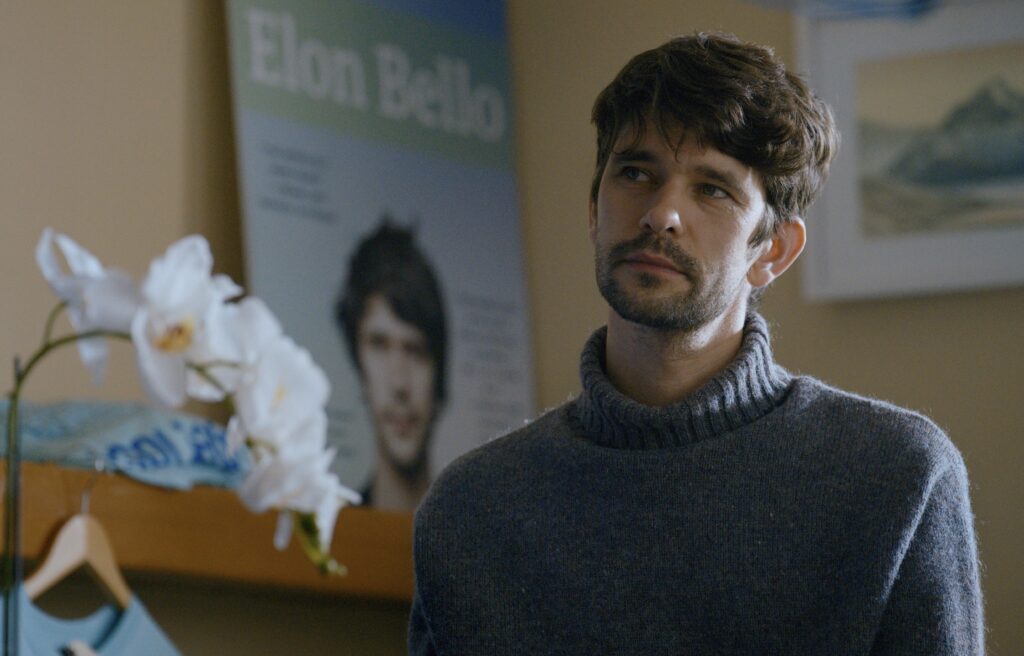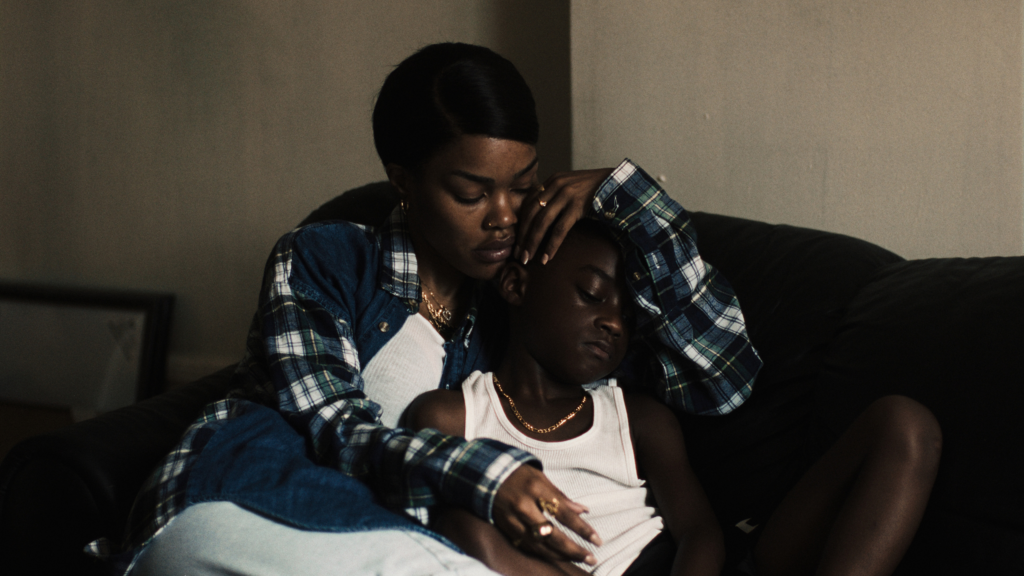April 2, 2023
by Carla Hay

Directed by Raine Allen-Miller
Culture Representation: Taking place in London, the comedy film “Rye Lane” features a cast of white and black characters (with a few Asians) representing the working-class and middle-class.
Culture Clash: A man and a woman in their 20s, who have opposite personalities and have had recent romantic breakups with other people, meet by chance in a public restroom and start a banter-filled relationship that could turn into more than a friendship.
Culture Audience: “Rye Lane” will appeal primarily to fans of quick-paced romantic comedies that skillfully blend realistic and fantastical elements.
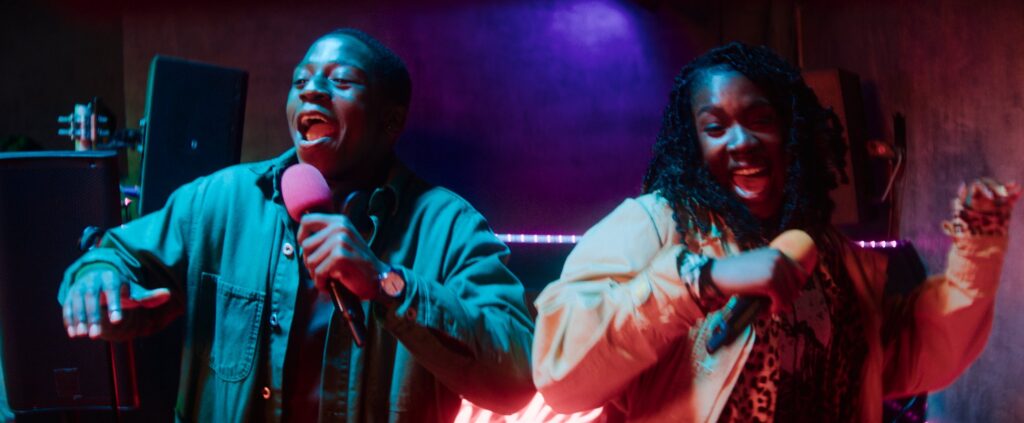
“Rye Lane” takes the usual romantic comedy formula, gives it a witty spin, and drenches it in Great Britain’s vibrant South London culture. Vivian Oparah and David Jonsson give winning performances in this funny and endearing movie. “Rye Lane” is the type of romantic comedy that could charm viewers who don’t like most romantic comedies, as long as viewers who understand the English language are willing to tolerate the heavy London accents in the movie.
Directed by Raine Allen-Miller, “Rye Lane” (her feature-film directorial debut) brings a dynamic visual aesthetic that is very reminiscent of hip-hop videos of the mid-to-late 1990s: bright hues, fish-eye lens camera shots, and fantasy sequences interspersed with the main characters’ “reality.” (Olan Collardy is the cinematographer for “Rye Lane.”) This visual flair greatly complements the appealing “Rye Lane” screenplay, which was written by Nathan Bryon and Tom Melia. “Rye Lane” had its world premiere at the 2023 Sundance Film Festival.
“Rye Lane” (which takes place entirely in South London) begins with overhead views of the camera looking down at various people in toilet stalls in a unisex public restroom at a trendy art exhibit. One of the people in the stalls is a mild-mannered accountant in his mid-20s named Dom (played by Jonsson), who is privately weeping over a breakup he had three months ago with a girlfriend he had dated for six years. An outspoken woman, who’s about the same age as Dom, enters the toilet stall next to his stall during his heartbroken sobbing.
Her name is Yas (played by Oparah), which is short for Yasmin. Dom doesn’t know it yet, but Yas will soon become a part of his life. Yas notices that Dom is crying and tells him that she can hear him. A startled Dom says that Yas is in the men’s room, but Yas corrects him and says that the restroom is actually unisex. Yas peeks underneath the stall and sees the lower half of what Dom is wearing. An embarrassed Dom quickly leaves the restroom.
The art exhibit is for Dom’s friend Nathan Armstrong (played by Simon Manyonda), an avant-garde photographer whose current specialty is taking close-up photos of people’s body parts. For this particular exhibit, the photos are close-ups of people’s open mouths. It’s an interesting metaphor for this dialogue-driven movie, where the two protagonists get to know each other through snappy conversations that later turn into heartfelt revelations.
Dom is obviously still reeling from the breakup. He gets upset with Nathan when he finds out that Nathan had brunch at the home that Dom used to share with Dom’s ex-girlfriend Gia (played by Karene Peter). Dom later mentions that he and Nathan have been friends since they were teenagers. They also used to work together at Kentucky Fried Chicken. At this event, Nathan is hyper and more concerned about what people think about his art exhibit than whatever breakup blues that Dom is experiencing.
It doesn’t take long for Yas to find Dom in this exhibit space. She strikes up a conversation with him. Dom explains why he was crying in the restroom. Yas says she broke up with her most recent boyfriend Jules, also known as Julian (played by Malcolm Atobrah), about a month ago, because he cheated on her with his life coach Tabby (played by Alice Hewkin).
It turns out that Dom’s relationship with his ex-girlfriend Gia also ended because of infidelity. Dom tells Yas that he caught Gia cheating on him with his best friend Eric (played by Benjamin Sarpong-Broni). Dom found out that Eric and Gia were lovers during a video chat with Gia, when he saw a naked Eric in the background of the apartment where Dom and Gia lived. There’s a little more to the story about how Dom found out about this betrayal, but those are comedy details that won’t be revealed in this review.
In Dom’s first version of this breakup story, he tells Yas that after he found out about the cheating, he immediately stormed over to the apartment and gave Eric a beatdown. This scenario is shown in the movie. But then, Dom quickly admits that this version isn’t the truth. In reality, when Dom found out about this infidelity, he went to see a movie by himself and cried in the theater.
“Rye Lane” has several scenes where the characters tell their versions of the truth or express fantasies that come alive on screen. Dom and Yas continue their conversation after leaving the exhibit. She wants him to tell her about his life: “I’m interested in people who have messes,” Yas says. “Everyone has a mess.”
Dom says that, believe it or not, he always wanted to be an accountant. By contrast, his friends wanted to get rich and famous as “footballers or YouTube sensations.” He currently lives rent-free with his parents. Dom’s father (played by Andrew Francis) wanted Dom to be more athletic. Dom’s mother (played by Sandra Daley) is overprotective and pampers him by bringing meals to him in bedroom. His mother has fixation on making hard-boiled eggs.
Yas does not reveal much about her background, except to say that when she was a child, she wanted to be like Prince during his “Purple Rain” era. Yas tells Dom that she’s currently a fashion buyer for “an online brand you’ve never heard of,” and her dream is to become a costume designer. “I’ll get there eventually,” she says with wistfulness. Yas has a supportive best friend Cass (played by Poppy Allen-Quarmby), who makes only a few brief appearances in the movie,
During the conversations between Yas and Dom, it’s obvious that they have different personalities. Yas is bold, brash and fast-talking. Dom is a little timid, more hesitant about himself, and he thinks more carefully about how his words can affect someone’s feelings. Yas says she’s ready to move on from her recent breakup, while Dom isn’t so ready to get over his breakup.
Dom believes he’ll able to get closure by accepting an invitation to meet with Gia and Eric (who are now a couple) for dinner at the same restaurant where Dom and Gia used to go on romantic dates. Dom mentions the name of the restaurant to Yas. Yas gives her unsolicited opinion that Dom will be “rolling over like a bitch” if he has this meeting.
Still, Yas offers to be Dom’s date to help him get through this meeting. He politely declines the offer, and she seems slightly hurt by this rejection. When Dom reaches out to shake her hand and say goodbye, Yas flippantly tells Dom: “Good luck not having an extraordinary life.”
But since “Rye Lane” is a romantic comedy, Dom hasn’t seen the last of Yas. Shortly after this awkward dinner meeting begins, Yas suddenly shows up at the restaurant, sits down next to Dom, and pretends that she’s his new lover. And she doesn’t hold back on her sassiness and brutally honest opinions. It’s the beginning of an emotional roller coaster for Dom and Yas.
As good as the writing and direction are for “Rye Lane,” much of the movie’s liveliness comes from the believable chemistry between Jonsson and Oparah. It’s a case of “opposites attract” for Dom and Yas, but in a relatable way that will make viewers want to root for Yas and Dom to become a couple. “Rye Lane” also pokes some fun at working-class people who are social climbers and put on pretentious airs—as exemplified by Nathan and Jules, who makes very tacky art decorations and consider himself to be a high-end artist. Yas met Nathan because Nathan and Jules know each other, which is why Yas was invited to Nathan’s art exhibit, where she met Dom.
There’s a very contrived plot development of Yas and Dom trying to gain access to Jules’ home when he’s not there, because she wants to retrieve her vinyl album of A Tribe Called Quest’s “The Low End Theory” that she accidentally left behind in the breakup. The expected hijinks ensue, but “Rye Lane” still has some unexpected surprises. One of these surprises (that has no bearing on the plot) is an uncredited cameo by Colin Firth, as a food server named Colin at a Latino fast-food place called “Love Gua’ctually,” which is “Rye Lane’s” cheeky nod to Firth’s 2003 romantic comedy/drama “Love Actually” and the guacamole served at this fast-food place. Like all entertaining romantic comedies that resonate with audiences, “Rye Lane” has plenty of amusing moments but also shows the beauty of what happens when people open up and show their true selves when falling in love.
Hulu premiered “Rye Lane” on March 31, 2023. Searchlight Pictures released the move in the United Kingdom on March 17, 2023.

